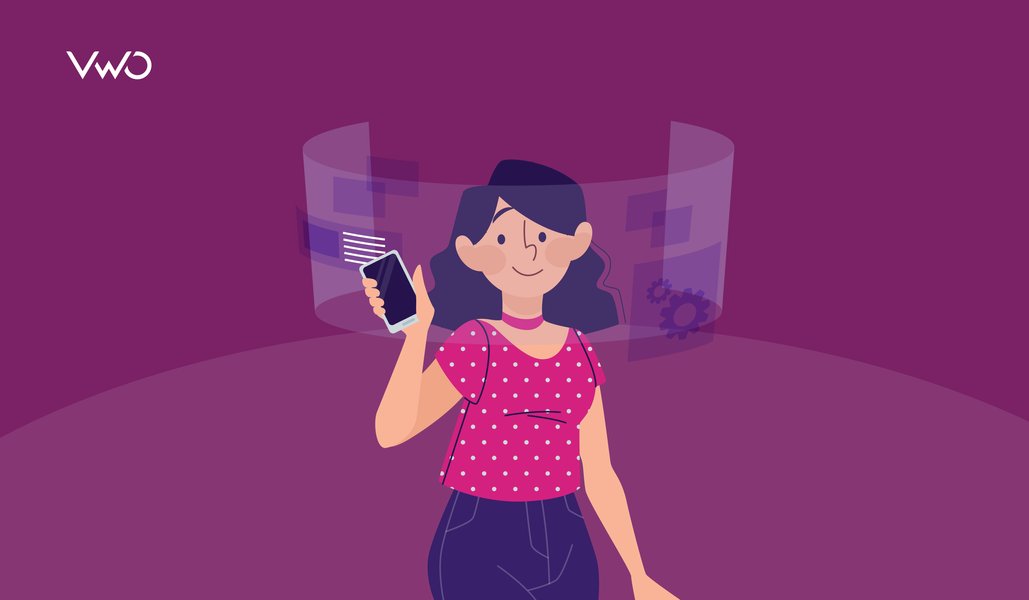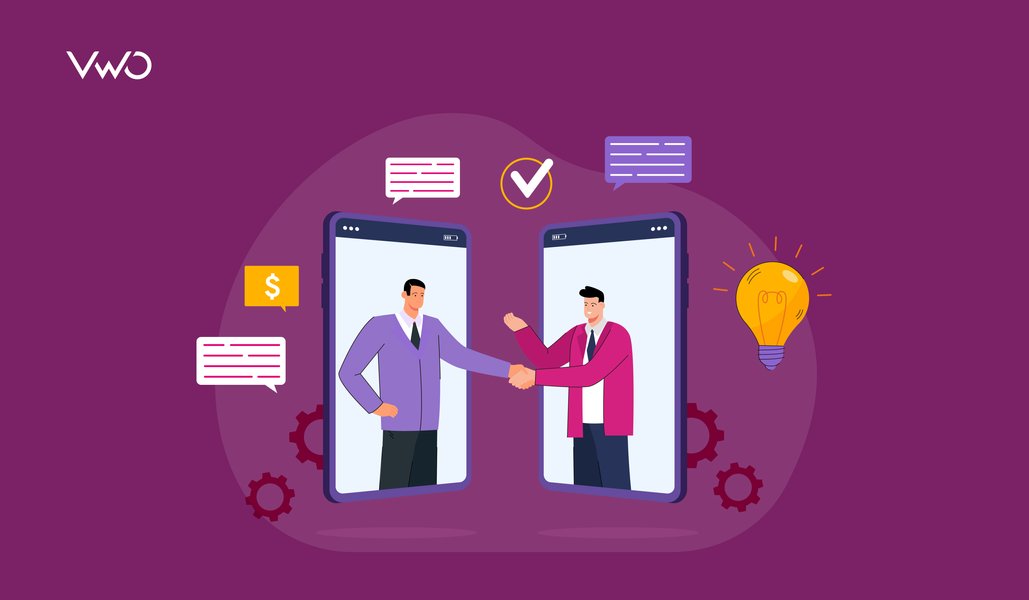From research to purchase, a typical customer journey is fraught with friction and anxiety. 77% of users say they want to contact a real person before buying. Contact can happen through phone, email, chat or social channels. But an overwhelming majority of 73% consumers feel live chat provides the highest satisfaction levels, compared to email with 63% and 44% for phone.
Download Free: A/B Testing Guide
It’s easy to understand why online stores need live chat when you look at the advantages of live chat:
- Fast Response Times: Live chat is quicker at resolving queries compared to other channels.
- Least Obtrusive: Live chat exists only where it is required – the online store.
- Convenience – a customer can chat to find answers even while doing other things (multi-tasking).
- Low-Barrier – While on a store, live chat is the easiest channel to find access to.
- Indirect Enough – consumers are jittery about getting on a call with sales people for fear of being hard-sold to. Live chat is indirect enough, letting consumers get on and off at their convenience.
60% of customers hate waiting for more than a minute for assistance. 43 seconds was the average time to solve a customer problem over chat, in a study involving 85000+ chats.
The above reasons highlight how live chat support is of value to the customer and can indirectly boost sales – happy prospects become paying customers. There are also direct ways that live chat helps business increase sales. Here’s how:
- Decode Customer Needs: Most live chat softwares tell you where a particular customer came from, giving you an idea about what exactly the customer is looking for. Or, the number of visits a particular customer made to your site, which might indicate that they are on your site to check if a particular product has become available. Armed with such information, initiating a timely and proactive chat session could effect a sale.
- Data and Knowledge: Chat softwares log almost every piece information giving you access to data like number of visits, time on page, operating systems used by the customer, geographical data etc. Such data helps the business understand customer behavior, leading to better marketing programs tailored to their needs.
In short, global trends in live chat usage show irrefutable evidence that on-site chat support is here to stay.
With a high adoption rate, little doubt should exist about the efficacy of live chat. It is also moving towards a higher degree of personalization with ideas like co-browsing, where a support person can show the customer around the website, highlighting different areas of importance.
But most studies we found online deal with the efficiency of live chat as a whole medium, with little information about demographic preferences.
Understanding demographic preferences can answer questions like, ‘are there particular segments of audience that live chat is best suited for?” and “are there particular query types that live chat is best suited to resolve?”. Knowledge of such kind can help businesses decide on the priority of including a live chat feature and improve its efficiency and ROI. Software Advice did a survey recently to understand consumer preferences when it comes to live chat.
We chatted up with Craig Borowski, Market Researcher at Software Advice, asking him 5 of the most often asked questions about live chat, its benefits and issues. Here’s it all.
1. Are there any target demographics that seem to need live chat more than the average consumer?
Consumer preference for live chat is inversely correlated with consumer age; as consumer age increases, the preference for live chat decreases. The survey results show that 64% of consumers aged 18-34 have used live chat successfully at least once, while 61% of consumers aged 55+ have never used it successfully.
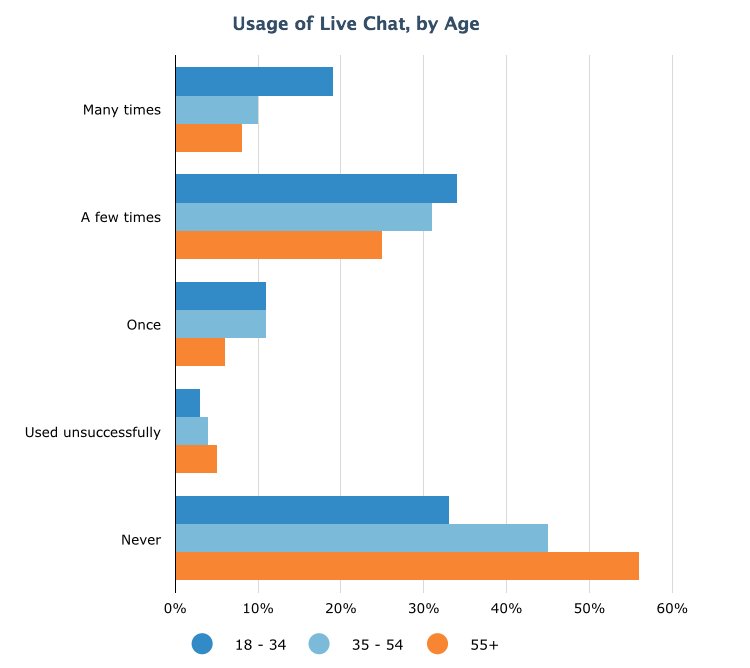
What this means is if your eCommerce store sells fancy t-shirts, you should have live chat implemented yesterday. Does this mean you don’t need live chat support if it’s hair-wigs that you sell? No. The survey only tells what consumer segment prefers live chat more. The fact remains that live chat is an extremely potent communication channel for all ages, and nearly all types of interaction.
If an online store implements live chat and realizes their audience rarely use it, then it’s more likely due to how it has been implemented than to any demographic variables of their customers.
2. Are there any particular query types that requires live chat more than others?
Live chat is great at providing immediate answers to simple queries, like “Do you have a return policy?”. Most customer queries before and during the purchase are easy to resolve because it is part of the purchase funnel and presumably, the business has thought through all the issues a customer might face and has answers at the tip of its fingers. Chat agents can simultaneously engage as many as 6 customers, making this channel very nimble at resolving simple customer queries. Triggers and automated greetings can also help speed up response times.
The survey results tell a similar story,
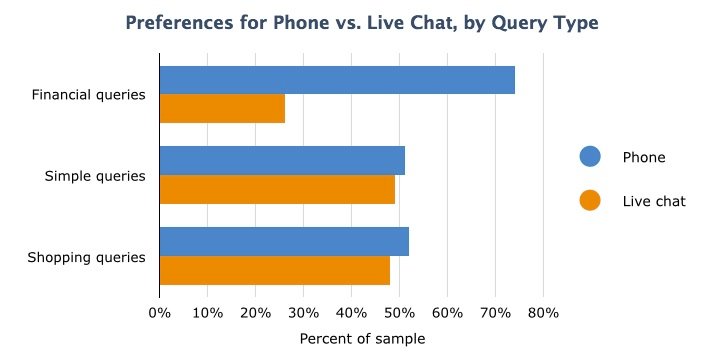
Financial queries are more sensitive by nature and consumers prefer to have those resolved over a more direct communication channel like phone. Typically such queries have more variables and initial responses might not be satisfactory to which customers might have more questions. It’s easier resolved over phone where their questions can be more personal and specific.
Download Free: A/B Testing Guide
Simple queries like ‘where can I find the subscription form?” and shopping queries like “Do you have free shipping?” are not as critical and customers look to find answers to such queries in the quickest means possible – live chat. Such questions should ideally be addressed in the FAQ section as well. But would you want a customer on the payment page to move away to the FAQ page to find answers? Exactly. Including a live chat option helps keep the customer on the road to purchase.
For these above reasons, make sure that you’ve both a phone number and a live chat option on your critical pages. The priority should be to help the customer resolve all of his queries without bouncing off of the page.
This behavior is visible across age groups as well. For each of these query types, consumers belonging to the lower age groups prefer live chat to phone.
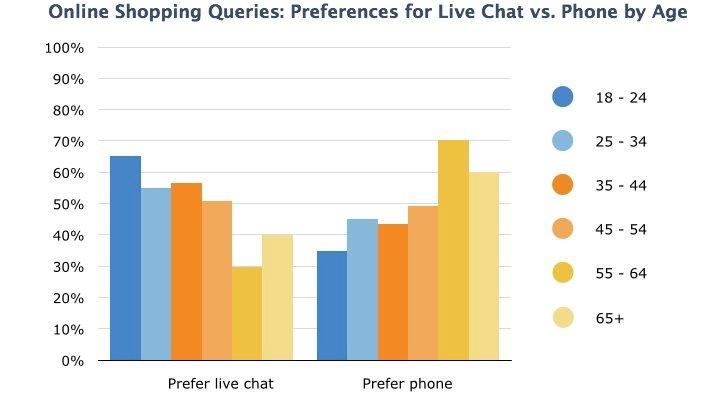
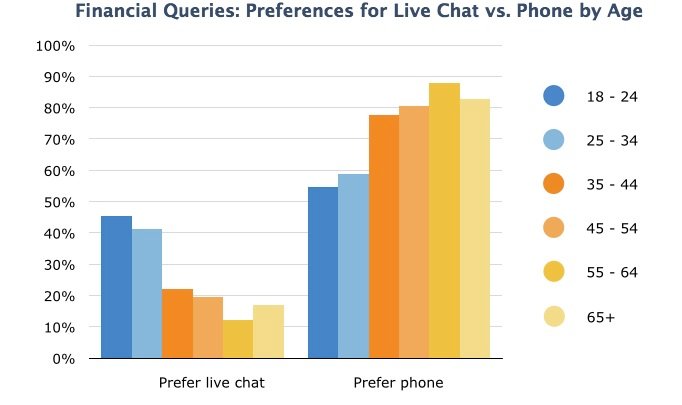
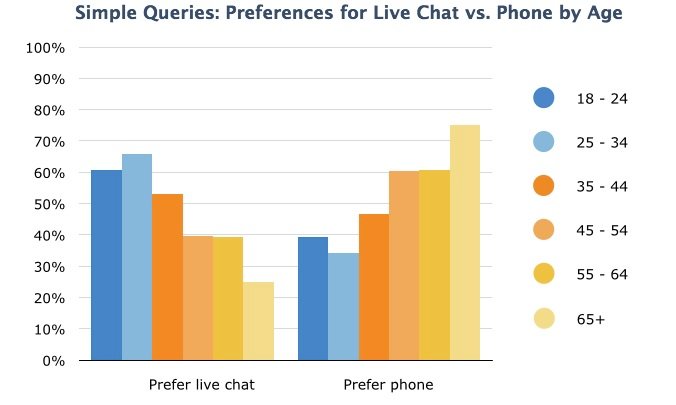
3. Are there certain industries that need live chat more than others?
Some business models will find much faster ROI with their live chat implementations than others. For example, eCommerce sites can realize the benefits of live chat (namely, increased sales) very quickly. Customer interactions in eCommerce settings tend to be simple and straightforward and live chat is the perfect way to handle them.
On the other hand, companies that use live chat for more intricate interactions, like those found with post-sales customer service, may need to make some adjustments after implementing live chat before the true ROI can be had. But it’s not just eCommerce stores that can benefit from having a live chat support option. Here’s how Ez Texting increased signups by 31% using a live chat widget.
4. What are the possible implementation issues adding live chat to your website?
As far as implementation is concerned, live chat is probably one of most painless technologies there is. In most cases it can be added to a website simply by inserting one or two lines of code. It also comes at about half the cost of a call center.
Of course, companies still need to make sure everything is in order before they make live chat available to the public. Wait-times need to be estimated, agent scheduling and training may need to be changed and new company policies may even need to be created. All that aside, generally speaking, a little planning goes a long way and live chat implementations usually go very smoothly.
5. Some live chat widgets pop up right away and others wait until they are requested – which is better?
Unfortunately, there’s really no one-size-fits-all answer. It depends entirely on the context of the website and what goals the company has for it. Generally speaking, you want customers to know that live chat is available, but you do not want to annoy them with it (by having it pop up too frequently). Fortunately, there are many clever ways to offer live chat without going overboard. For example, the chat window can pop up only after a person has spent longer than average on a particular Web page, as this could indicate they have a question about it.
The key is to begin with a clear understanding of how customers currently use the website. To understand the customer and his behavior, mapping out customer journey is immensely useful. Once this is done, it should become clear how live chat should be implemented, and to whom it should be offered, to give customers the opportunity to use it when they need it, but not annoy them with excessive pop-up offers to chat.
Have you been using live chat for your online shop? How has it worked for you so far and are the findings of the survey in line with your experience of it so far?
Share your experience with us and we’ll all sleep a little wiser tonight.





